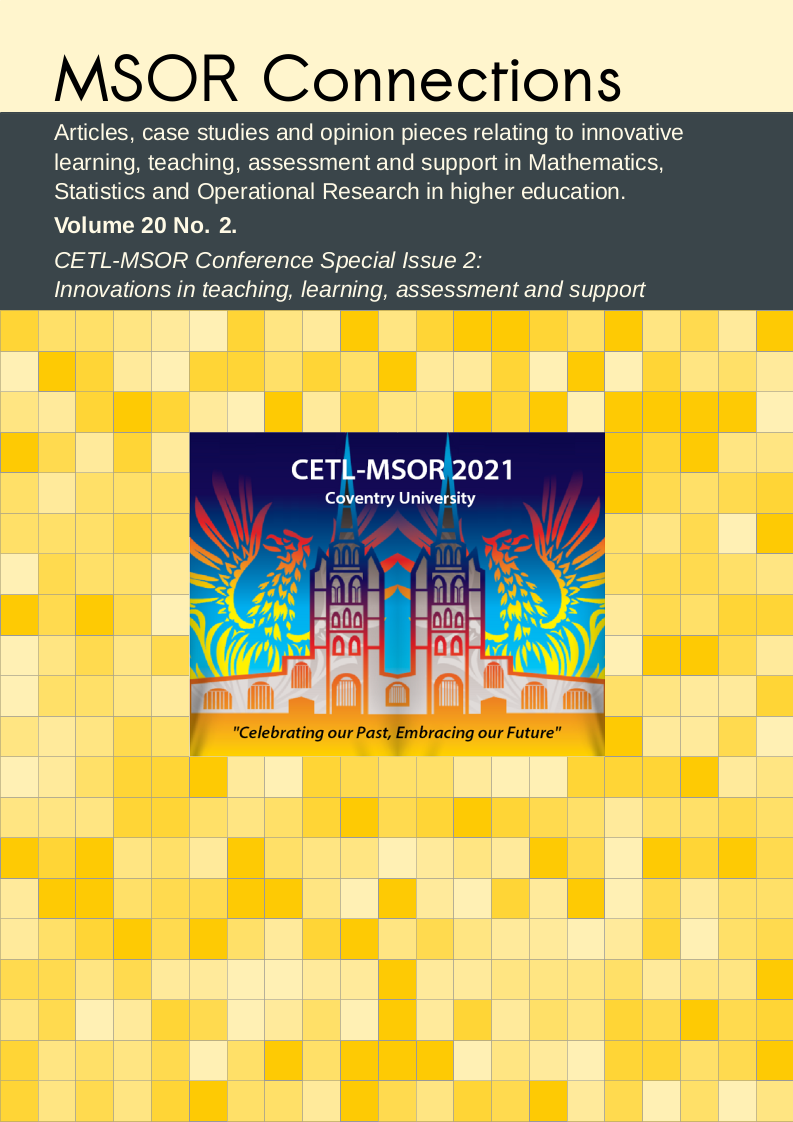Accessible teaching with GNU TeXmacs
DOI:
https://doi.org/10.21100/msor.v20i2.1313Keywords:
accessibility, HTML, software, WYSIWYGAbstract
In this article I give a brief overview of some of the challenges in creating accessible documents for STEM education, as well as why and how GNU TeXmacs can be used to address some of these.
References
Right to Education Initiative, 2022. International law. Available at: https://www.right-to-education.org/page/international-law [Accessed 14 February 2022].
HM Government, 2021. Making online public services accessible. Available at: https://accessibility.campaign.gov.uk/ [Accessed 28 October 2021].
Cervone, D., Krautzberger, P. and Sorge, V., 2016. New Accessibility Features in MathJax, The Journal on Technology and Persons with Disabilities, 4, pp. 167-175. Available at: http://hdl.handle.net/10211.3/180124 [Accessed 9 May 2022].
Mittelbach, F. and Rowley, C., 2020. LaTeX Tagged PDF—A blueprint for a large project, TUGboat, 41(3), pp.292-298. https://doi.org/10.47397/tb/41-3/tb129mitt-tagpdf
Poulain, F. and Van Der Hoeven, J., 2014. Conservative conversion between LaTeX and TeXmacs. Available at: https://hal.archives-ouvertes.fr/hal-00952926 [Accessed: 28 October 2021].
Van der Hoeven, J., 2020. The Jolly Writer. Your Guide to GNU TeXmacs. Scypress.
British Dyslexia Association, 2018. Dyslexia Style Guide 2018: Creating Dyslexia Friendly Content. Available at: https://www.bdadyslexia.org.uk/advice/employers/creating-a-dyslexia-friendly-workplace/dyslexia-friendly-style-guide [Accessed: 28 October 2021].

